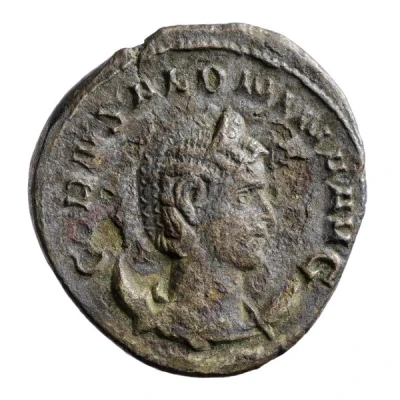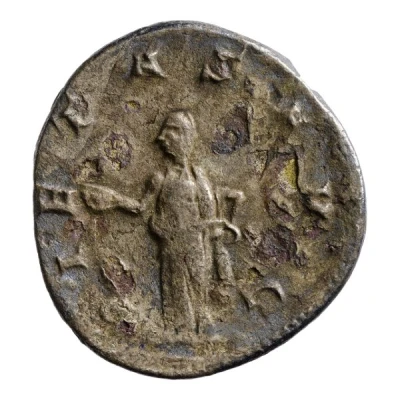Antoninianus - Cornelia Salonina PAX PVBLICA; Pax
| Silver | - | - |
| Issuer | Rome › Roman Empire (27 BC - 395 AD) |
|---|---|
| Empress | Cornelia Salonina (Julia Cornelia Salonina) (254-268) |
| Emperor | Gallienus (Publius Licinius Egnatius Gallienus) (253-268) |
| Type | Standard circulation coin |
| Years | 260-268 |
| Value | Antoninianus (1) |
| Currency | Antoninianus, Reform of Caracalla (AD 215 – 301) |
| Composition | Silver |
| Shape | Round (irregular) |
| Technique | Hammered |
| Demonetized | Yes |
| Updated | 2024-10-05 |
| Numista | N#289643 |
|---|---|
| Rarity index | 100% |
Reverse
Pax, draped, seated left, holding olive-branch in right hand and sceptre in left hand.
Script: Latin
Lettering:
PAX PVBLICA
-/-//V
Translation:
Pax Publica.
Peace of the public.
Comment
Source:Online Coins of the Roman Empire (OCRE)
Interesting fact
The Antoninianus coin was introduced during the reign of Emperor Antoninus Pius (138-161 AD) as a replacement for the denarius, which had been the standard Roman silver coin for centuries. The Antoninianus was made of silver, but it was smaller and lighter than the denarius, with a lower silver content. Despite its lower value, the Antoninianus was still widely accepted and used throughout the Roman Empire, and it remained in circulation for over a century. The coin features an image of the empress Cornelia Salonina, who was the wife of Emperor Gallienus (260-268 AD), on the obverse (front side), and the goddess Pax (Peace) on the reverse (back side). The inscription "PAX PVBLICA" (Public Peace) on the reverse side highlights the Roman Empire's focus on maintaining peace and stability throughout its territories. Overall, the Antoninianus coin is an interesting piece of history that provides insight into the economic and political climate of the Roman Empire during the 3rd century AD.

